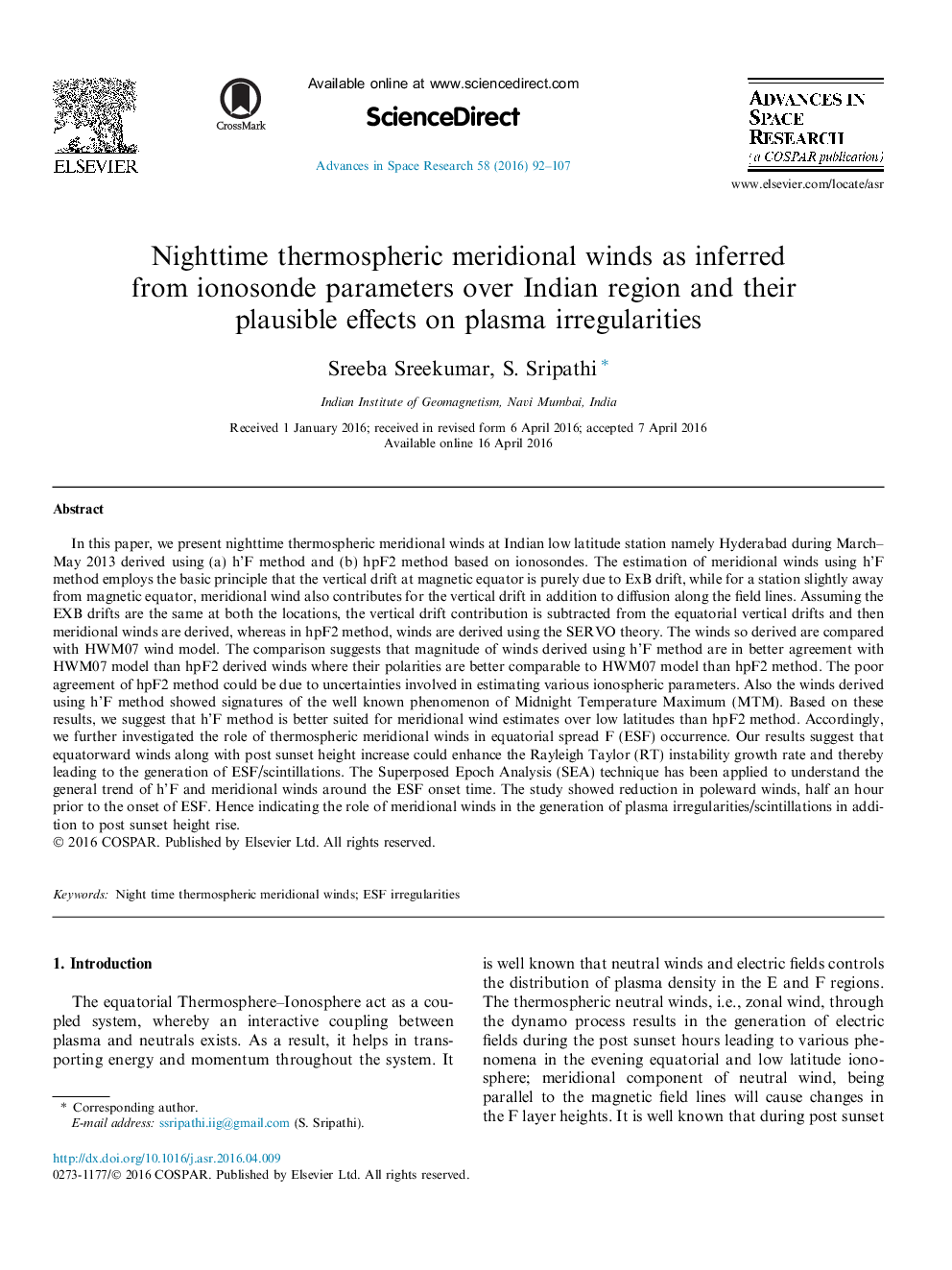| کد مقاله | کد نشریه | سال انتشار | مقاله انگلیسی | نسخه تمام متن |
|---|---|---|---|---|
| 1763236 | 1019990 | 2016 | 16 صفحه PDF | دانلود رایگان |
In this paper, we present nighttime thermospheric meridional winds at Indian low latitude station namely Hyderabad during March–May 2013 derived using (a) h’F method and (b) hpF2 method based on ionosondes. The estimation of meridional winds using h’F method employs the basic principle that the vertical drift at magnetic equator is purely due to ExB drift, while for a station slightly away from magnetic equator, meridional wind also contributes for the vertical drift in addition to diffusion along the field lines. Assuming the EXB drifts are the same at both the locations, the vertical drift contribution is subtracted from the equatorial vertical drifts and then meridional winds are derived, whereas in hpF2 method, winds are derived using the SERVO theory. The winds so derived are compared with HWM07 wind model. The comparison suggests that magnitude of winds derived using h’F method are in better agreement with HWM07 model than hpF2 derived winds where their polarities are better comparable to HWM07 model than hpF2 method. The poor agreement of hpF2 method could be due to uncertainties involved in estimating various ionospheric parameters. Also the winds derived using h’F method showed signatures of the well known phenomenon of Midnight Temperature Maximum (MTM). Based on these results, we suggest that h’F method is better suited for meridional wind estimates over low latitudes than hpF2 method. Accordingly, we further investigated the role of thermospheric meridional winds in equatorial spread F (ESF) occurrence. Our results suggest that equatorward winds along with post sunset height increase could enhance the Rayleigh Taylor (RT) instability growth rate and thereby leading to the generation of ESF/scintillations. The Superposed Epoch Analysis (SEA) technique has been applied to understand the general trend of h’F and meridional winds around the ESF onset time. The study showed reduction in poleward winds, half an hour prior to the onset of ESF. Hence indicating the role of meridional winds in the generation of plasma irregularities/scintillations in addition to post sunset height rise.
Journal: Advances in Space Research - Volume 58, Issue 1, 1 July 2016, Pages 92–107
